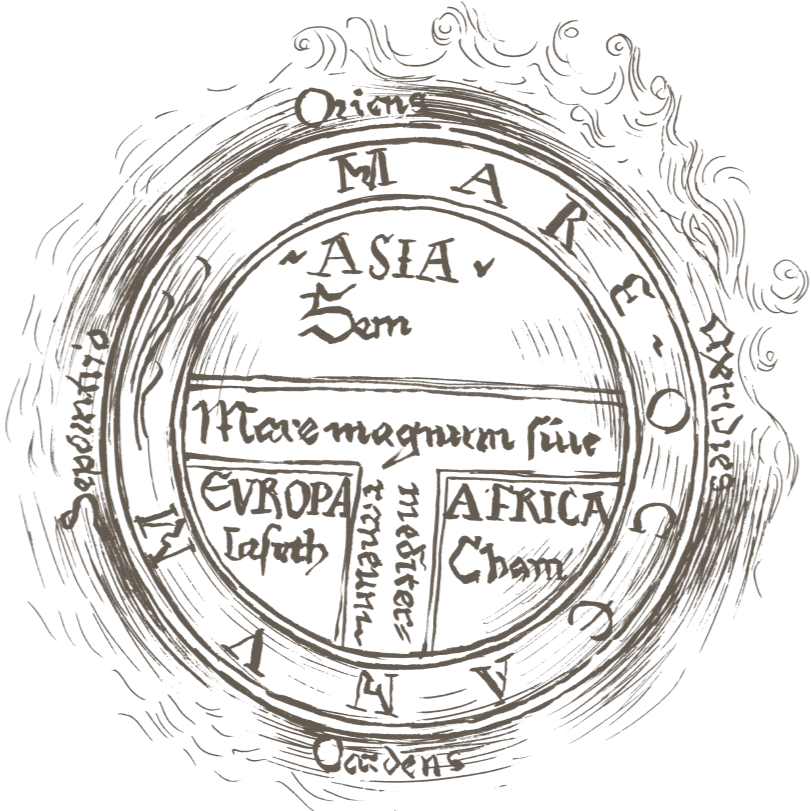Language
The Lord's Prayer in Latin
Pater noster qui es in cælis
Sanctificetur nomen tuum
Adveniat regnum tuum
Fiat voluntas tua sicut in cælo et in terra
Panem nostrum supersubstantialem da nobis hodie
Et dimitte nobis debita nostra sicut et nos dimittimus debitoribus nostris
Et ne nos inducas in tentationem sed libera nos a malo
Latin is one of the most important ancient languages. It evolved from the Italic branch of the Indo-European language family. It was originally spoken by the people of Latium, an area in central Italy that includes the city of Rome. Over time, Latin spread across the Roman Empire, becoming the dominant language in most of Europe and in some regions of North Africa and the Middle East. Latin became the language of the educated people across the civilized world and it started to serve as a unifying tool for communication. The vast majority of medieval literary works was written in Latin.
Script
The Latin alphabet evolved from the earlier Etruscan alphabet, which itself was derived from the Greek alphabet. The number of letters and their forms changed over time. For example, Latin alphabet originally had no letters for J, U, or W, and the letters I and V were used to represent those sounds until later modifications were made. Now, the Latin alphabet consists of 26 letters and is one of the most widely used writing systems in the world, used by most European languages (all Baltic languages, the vast majority of Germanic and Romance languages, and more than half of the Slavic languages).
In terms of orthography, early Latin had no standardized system for spelling, and variations were very common. Over time, complex of conventions was developed, as Latin became the language of education and literature. While classical Latin had a relatively fixed orthography, medieval Latin was characterized by a lack of standardization and there were many variations due to regional differences, the influence of local languages, and the evolving nature of the language itself.
Literature
Literature written in Latin played a crucial role in shaping Western literary traditions. Its legacy continues to influence modern literature and intellectual traditions. Hundreds of works written in Latin have survived. These texts were written during the time of ancient Rome, later in the Middle Ages and literary works were still written in Latin during the Renaissance. From the vast number of important literary works written in Latin during the Middle Ages, only the most interesting and significant are selected here.
Confessions by St Augustine (4th century)
Confessions is an autobiographical work by St Augustine, one of the most important Christian philosophers and theologians. It describes his sinful youth, his conversion to Christianity, and his reflections on the grace of God. The work is notable for its introspective style and philosophical discussions.
Rule of St Benedict (6th century)
This work is a guide for monastic life and it is connected with the foundation of Benedictine monasticism. The Rule provides detailed instructions on the structure, discipline, and practices of monastic communities, emphasizing values such as humility, obedience, and communal living. It had a profound influence on the development of Christian monasticism.
Dialogues by Gregory the Great (6th century)
Dialogues written by Pope Gregory I is a collection of four books, primarily focused on the lives of Italian saints. The text also includes theological discussions on Christian virtues and the nature of miracles. The Dialogues became widely read throughout medieval Europe and contributed to the development of medieval hagiography and the popularization of monastic ideals.
Etymologies by Isidore of Seville (7th century)
It is a massive encyclopaedic work written by the Spanish scholar Isidore of Seville. It is one of the most important sources of knowledge in the early Middle Ages, compiling information on topics such as language, history, geography, animals, and the arts. The work organizes knowledge through etymologies (the origins of words) and was intended to serve as a comprehensive reference for scholars of the time. It was widely read and highly influential in medieval education.
Ecclesiastical History of the English People by Bede (8th century)
Written by the Anglo-Saxon monk Bede the Venerable, this work is a comprehensive history of the English church and its people, from the Roman occupation of Britain to the early 8th century. The Ecclesiastical History is one of the most important sources for the history of early medieval England, offering insights into the spread of Christianity and the development of English society.
Sentences by Peter Lombard (12th century)
It is one of the most influential theological works of the Middle Ages. Structured as a collection of sentences (short theological statements), it addresses key aspects of Christian doctrine, such as the nature of God, creation, sin, grace, and salvation. The work served as a textbook for medieval theological studies and became the basis for many subsequent commentaries and discussions in scholastic theology.
Carmina Burana (circa 12th century)
It is an anonymous collection of medieval Latin poems and dramatic texts. The poems reflect the themes of love, fortune, and the fleeting nature of life. The collection captures the vibrant, sometimes rebellious spirit of the medieval student and clerical culture.
Golden Legend by Jacobus de Voragine (13th century)
This collection of hagiographies (lives of saints) was compiled by the Archbishop of Genoa, Jacobus de Voragine. This work became immensely popular in the Middle Ages and was translated into many vernacular languages. It contains detailed accounts of the lives, miracles, and martyrdoms of saints, serving as both a religious guide and a source of inspiration for medieval Christians.
Summary of Theology by Thomas Aquinas (13th century)
This huge theological work was written by the Dominican friar Thomas Aquinas, considered one of the greatest philosophers and theologians of the Middle Ages. In this work, Aquinas addresses a wide range of theological and philosophical topics, including the nature of God, morality, the relationship between faith and reason, and human salvation. It remains a cornerstone of Catholic theology and has had a lasting impact on Western philosophy.
Literal Commentary by Nicolaus de Lyra (14th century)
It is a biblical commentary that became one of the most important commentaries on the Bible during the Middle Ages. In this work, Lyra provides a detailed literal interpretation of Scripture, seeking to clarify the meaning of the biblical text while drawing on both Church Fathers and Jewish tradition. His work had a significant impact on later biblical scholarship, and it was frequently cited by medieval theologians.
Influence
Latin has played a crucial role in the development of Western languages and culture and its legacy is deeply embedded in modern language, literature, and thought. As the language of the Roman Empire, Latin spread across vast territories, becoming the foundation for many modern languages. Its influence can be seen in the Romance languages (Spanish, French, Italian, Portuguese, and Romanian). All these languages directly evolved from Latin and retain much of the vocabulary, grammar, and sentence structure from their Latin roots. Beyond the Romance languages, Latin has also left a significant mark on English. While English is a Germanic language, Latin has contributed heavily to its vocabulary, many English phrases and expressions have their origins in Latin, and thus Latin continues to shape how we communicate every day.
Interesting facts
Although Latin is often considered a “dead” language, its influence is still very strong. Latin is still taught in schools and universities around the world, often to help students understand the roots of modern languages and classical literature. Latin is still the official language of the Vatican City and church documents, official correspondence, and even some papal speeches are delivered in Latin.
In recent years, there has been a growing movement to bring Latin back as a spoken language. Latinists around the world have formed communities where they practice speaking, reading, and writing in Latin daily. This movement called Living Latin refers to the practice of speaking and using Latin in contemporary communication, as opposed to studying it only as a historical or literary language. Through spoken Latin groups, conferences, and publications, this ancient language finds new life, reminding us that, although no longer a native tongue, influence of Latin remains strong in modern culture. There is even a Wikipedia written in Latin! See https://la.wikipedia.org/wiki/Vicipaedia:Pagina_prima.
External resources
Dictionaries
https://latinitium.com/latin-dictionaries/
https://www.latin-is-simple.com/
Literature







